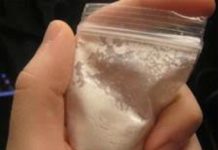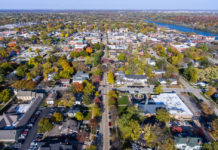An article published in the Journal of Pain & Palliative Care Pharmacotherapy earlier this year suggested that all the recent attention on the opioid crisis in the U.S. has created an unbalanced policy driven by sensationalistic headlines and political rhetoric.
This unbalanced policy neglects the benefits “of these medicines for large numbers of patients,” and have the “potential to prevent persons in chronic pain from receiving medications that they legitimately need,” the article stated.
Although the authors acknowledge that nonmedical use of opioids carries substantial risks including overdose, addiction and death, and the fact that the “extensively reported increase in opioid consumption in the United States has been accompanied by a notable increase in overdose deaths involving prescription opioids,” it also stresses the fact that “without much analysis of what actually contributes to nonmedical use, measures were taken to limit the availability of such medicines that could be prescribed to patients with pain.”
However, recent statistics from the National Institute on Drug Abuse (NIDA) paint a very different picture — one that shows that opioid painkillers are being overprescribed, and leading to non-medical use, addiction, and a transition to heroin.
It is estimated that between 26.4 million and 36 million people abuse opioids worldwide, with an estimated 2.1 million people in the U.S. suffering from substance use disorders related to prescription opioid pain relievers in 2012, NIDA stated. In addition, the number of prescriptions for opioids like hydrocodone and oxycodone products have risen from approximately 76 million in 1991 to almost 207 million in 2013.
Additionally, the article stated that “we see a disturbing tendency of doctors, researchers, politicians, and the media to be preoccupied by the wrong aspects of opioid use, losing sight of the picture as a whole.”
It pointed to several tweets made by President Barack Obama in 2015, including one where he stated that heroin-related deaths nearly quadrupled between 2002 and 2013. The article’s authors called the figures “exaggerated,” “only half of the truth,” and pointed out that heroin-related deaths increased by a factor of 1.57 (from 2,089 deaths in 2002 to 3,278 in 2009), “and only when the number of prescription opioid-related deaths stabilized after 2009 did the increase in heroin-related deaths accelerate to 5,925 in 2012 (2.83 times the rate in 2002).”
Regardless of whether the statistics President Obama tweeted were exaggerated, there was definitely a notable increase — one that deserves attention, and concern. And one that begs the question of whether the uptick in heroin-related overdoses are somehow tied to the increase in prescriptions for opioid painkillers.
Chemical tolerance toward prescribed opioids, may in some cases “explain the transition to abuse of heroin, which is cheaper and in some communities easier to obtain than prescription opioids,” according to NIDA.
According to findings by Centers for Disease Control, opioid overdose deaths in the U.S. have increased by 200 percent since 2000. In 2013 there were… (continue reading)
















